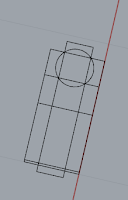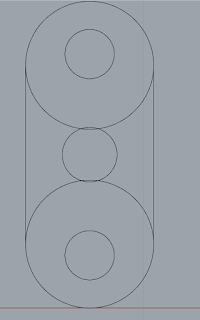Reverse Engineered Object: Week 2
So after measuring up my three objects, and learning that my mystery second object was an incomplete 'third hand', a tool used to hold objects while soldering (and borrowing a complete one, thanks Bryan) I decided to model the second object.
I initially intended to start with the base of the object- but it has a mottled texture that makes it impossible to get consistent measurements, I was unsure what to do with that at the moment, so I decided to leave it be for the time I had to work on this, and move on to other pieces.
So I began on the central bar, pretty straightforward construction, I had difficulty measuring the small angled 'step', but the other parts were easy. My construction was a bit sloppy, and I did much more trimming than was necessary as result, I'll need to improve that aspect of my work flow going forward. I also forgot the lathed out part in the center initially and had to go back to it, it also wasn't exactly centered, being slightly closer to one side, good thing I measured the distance from both sides.




Sloppy construction yet again, yeesh. This one required a bit of number roughing on some of the steps as it was effectively impossible to get the digital caliper onto those parts- but I got as close as I can possibly think to get it, it is on target. For the hole, I measured out and made sure it was slightly larger than central piece of the third hand, it has a pretty loose tolerance, I also added the divot on the back, which is just a consequence of the lathing process, but it's a nice piece of detail, and is important for a project like this I think. I still needed to do the screw, but I had a great momentum and wanted to do one more simple part of the object to keep up the speed so I decided to jump around a bit.


These pieces are very loosely made, there is six of them and each one is slightly different, I'm not sure yet if it's a good idea to copy those asymmetries, as some are clearly the consequence of use and others are a result of loose construction tolerances, it would be more accurate to the specifics of the project, but also it wouldn't look very good, right? After that I decided to stop, it had been about 4 hours and I had developed a lot of questions about my next steps, so it felt like a natural stopping point. There's still a ton to do but I'm feeling more confident about my tool set now so I think my pace will improve as the project continues










Comments
Post a Comment